How to Locally Optimize a Website with Schema Markup (Step-by-Step Guide with Examples)

Why Local SEO Isn’t Optional Anymore
Imagine you’re a local bakery in a busy neighborhood. You’ve got the best sourdough bread in town, but when people search “best bread near me,” your shop doesn’t show up. Meanwhile, your competitor across the street is on top of the search results. Why? Because they’ve optimized their website with schema markup for local SEO.
Today, if your business depends on local customers, showing up on Google is everything. Schema markup helps search engines understand your business and display it properly in local results. This guide will teach you how to locally optimize your website using schema.
What is Schema Markup (Structured Data)?
Schema markup is code you add to your website to help search engines understand what your business is about. Think of it as a translator that turns your website content into something Google can read easily.
The official library for schema types is Schema.org. The format recommended by Google is JSON-LD (JavaScript Object Notation for Linked Data).
Example:
{
“@context”: “https://schema.org”,
“@type”: “LocalBusiness”,
“name”: “Swiss Bakery”,
“address”: {
“@type”: “PostalAddress”,
“streetAddress”: “53”,
“addressLocality”: ” Shiddeshwari Lane”,
“addressRegion”: “Dhaka”,
“postalCode”: “1217”
},
“telephone”: ” 01977-045118″
}
Why Schema is Crucial for Local SEO
Schema markup boosts your website’s visibility in several important ways:
-
Search Engine Visibility: Helps your business appear with rich snippets like hours, ratings, and map location.
-
Local Pack Ranking: Google uses structured data to show businesses in the Local 3-Pack (the map section).
-
Voice Search Ready: Schema makes it easier for voice assistants to answer questions about your business.
-
Builds Trust: Information like reviews and business hours builds credibility and increases click-through rates.
Step-by-Step: How to Add Local Schema Markup
Step 1: Identify Your Business Type
Go to Schema.org and search for your business category. Use the most specific type available.
-
Example:
-
Dentist =
Dentist -
Bakery =
Bakery -
Auto repair =
AutoRepair
-
Step 2: Use the LocalBusiness Schema Template
Key elements to include:
-
@type: Your business category -
name -
image -
address -
geo(latitude, longitude) -
telephone -
url -
openingHours -
aggregateRating(optional but helpful)
Step 3: Create JSON-LD Script
You can manually write the schema or use Google’s Structured Data Markup Helper.
Example:
{
“@context”: “https://schema.org”,
“@type”: “Bakery”,
“name”: “Swiss Bakery”,
“url”: “https://swissbakery.com”,
“address”: {
“@type”: “PostalAddress”,
“streetAddress”: “53”,
“addressLocality”: ” Shiddeshwari Lane”,
“addressRegion”: “Dhaka”,
“postalCode”: “1217”
},
“geo”: {
“@type”: “GeoCoordinates”,
“latitude”: “30.2672”,
“longitude”: “-97.7431”
},
“telephone”: ” 01977-045118″
}
}
Step 4: Test Your Schema Markup
Use tools like:
Fix any errors before going live. An incorrect schema can be ignored by Google.
Step 5: Embed Schema on Your Website
Add the JSON-LD code to the <head> section of your HTML or just before the </body> tag.
-
If using WordPress, use plugins like:
-
Rank Math
-
Yoast SEO
-
Schema Pro
-
Advanced Local Schema Tips
-
sameAs: Link to your social media profiles. -
hasMap: Embed a Google Map of your business. -
aggregateRating: Show overall review ratings for rich snippets. -
Multi-location Businesses: Use
branchOfor create separate schema for each location.
Real-World Example: Coffee Shop in Chicago
Brew Bros Café in Chicago added LocalBusiness schema with geo-coordinates, reviews, and opening hours. Within three months, their organic traffic increased by 45%, and they appeared in the Local Pack for “best coffee near me.”
They used:
-
LocalBusiness -
Place -
Review -
PostalAddress
Before adding schema, their website only showed up on the second page. After schema and a few local backlinks, they shot up in rankings.
Mistakes to Avoid
-
Adding outdated or incorrect info (especially phone or address)
-
Not validating schema before publishing
-
Ignoring multi-location structure
-
Overusing irrelevant fields that confuse search engines
Tracking the Impact
Use Google Search Console and Google Analytics to monitor:
Local keyword impressions
Organic traffic
CTR (Click-Through Rates)
Appearance in Local Pack or Knowledge Panel
Look for rich result tags and location-based queries that improve over time.
Tools & Resources
-
WordPress Plugins:
-
Rank Math
-
Yoast SEO
-
Schema App Structured Data
-
Conclusion: Your Next Steps
If you run a local business, schema markup is one of the fastest, easiest, and most powerful ways to boost your local visibility. It tells search engines exactly what your business is, where it is, and when you’re open.
Don’t let your competitors win the search game just because they added a few extra lines of code. Be visible. Be local. Be optimized.
Start by identifying your business type, adding JSON-LD to your site, and testing it for accuracy. It may be technical, but the rewards are real and measurable.
Your future customers are searching. Make sure they find you, not someone else.
Rana Ahmed is an Affiliate Marketer and SEO Enthusiast from Bangladesh. Since starting his SEO journey in 2022, he has worked on 10+ websites, helping them grow through smart, data-driven strategies. At Rank Start BD, he supports clients with effective SEO and digital marketing solutions. Rana is passionate about sharing clear, honest advice to help others succeed online.

